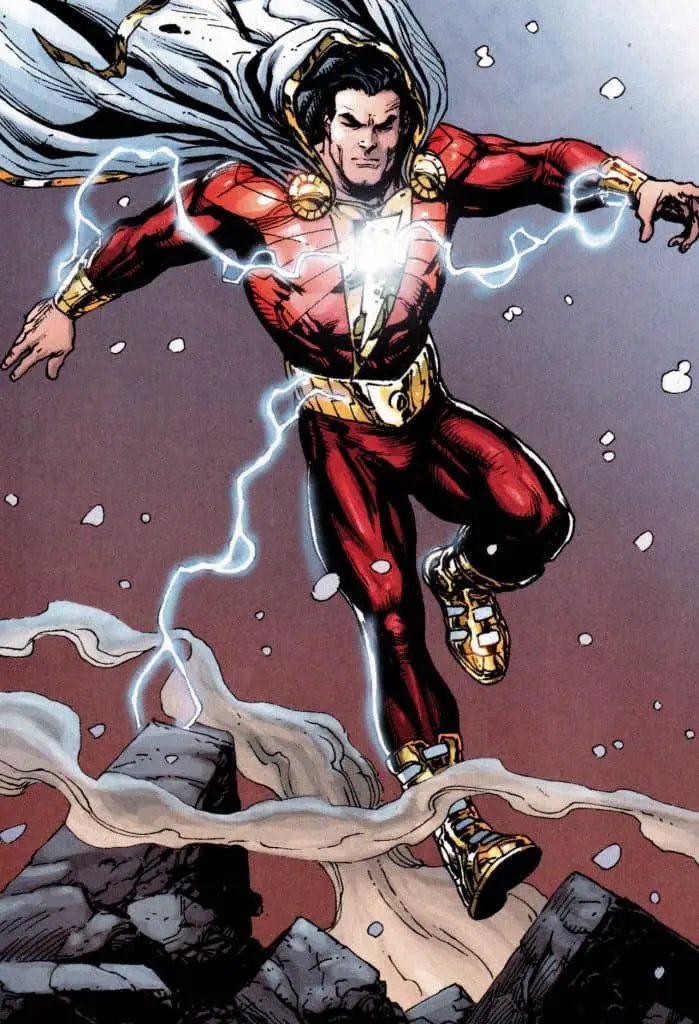
March is nearly here and that means the time of superhero movies will be upon us. From the fabulous fair of Marvel Studios, to the latest super-powered funfest from DC and Warner Bros.
A lot of people know the core characters of both the Justice League and the Avengers. Moreso now thanks to these big screen blockbuster projects. But what about the heroes who are just as important as Batman, Superman, Wonder Woman, Aquaman and the rest? The ones who have been around just as long, and whose history is loaded with interesting stuff?
Well that’s what the focus of this piece will be on today. So sit back, grab some popcorn, and get ready for a deep dive into the heroic star of DC’s next powered picture…Shazam!
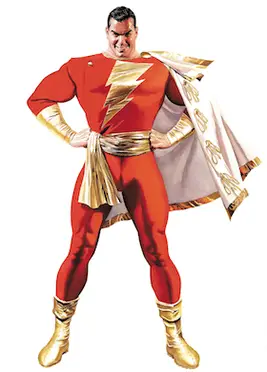
Of course, he wasn’t always called Shazam. No, to get a real sense of who this character is beyond the surface; that’s where the digging deep comes into play. The focus of this article will be not only about the history of the hero, but also his media presence leading up to his April big screen splash.
First stop is the 1940s. A time when the world was at war and comic books cost only a dime. New heroes were popping up from all over the place, from both the companies that would eventually become DC and Marvel, and everywhere else too.
Enter Fawcett Comics and the two distinguished gentlemen who created this caped colossus, writer Bill Parker and artist C.C. Beck. Originally conceived by Parker as a team of six heroes, each with their own unique powers, Beck was brought in by executive director Ralph Daigh to do the illustrations. Beck (with a suggestion from Ralph) came up with the character of Captain Thunder. From this rough idea and Beck’s artwork, the seed was planted.
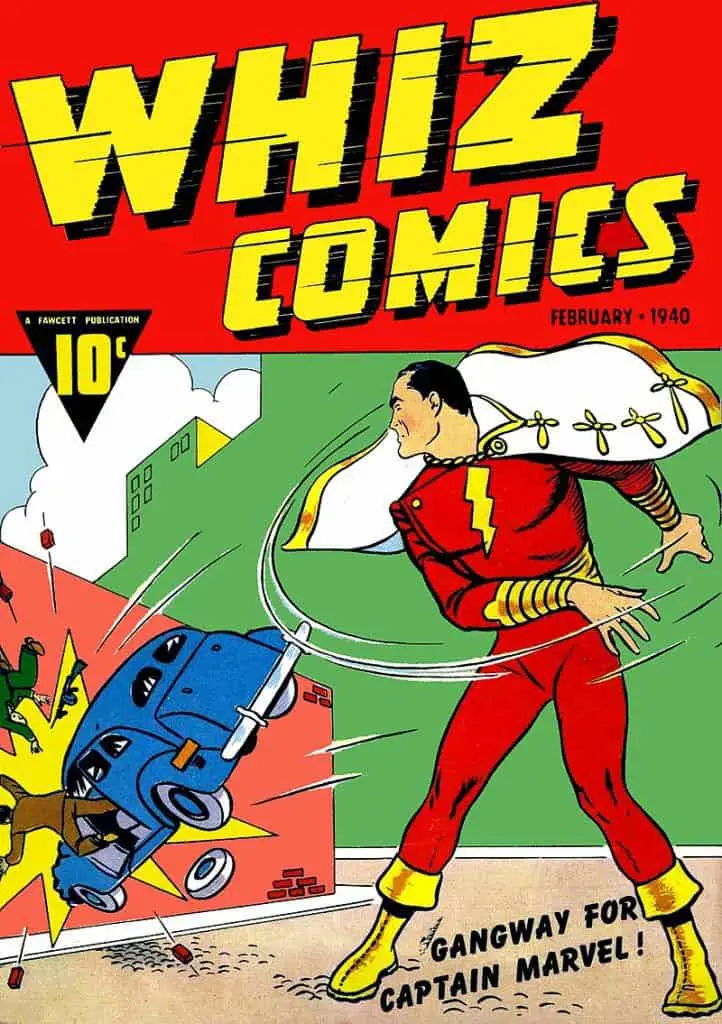
What followed next changed the course of comics history, much as Superman did in 1938. First appearing in Whiz Comics #2 in February of 1940, the cover bore a caped and booted man, clad in red with a lightning bolt on his chest, tossing a car into a wall. With the bold declarative…Gangway for Captain Marvel! And the rest is history.
There are people who will read this and wonder, wait, isn’t Captain Marvel over at Marvel Comics? She’s got a movie coming out soon. And that’s true, she is and does. But long before Carol Danvers took the name Captain Marvel, it was used elsewhere.
Captain Marvel gained popularity quickly with young readers everywhere. The idea of a kid, the same as any of them, who could become a hero just by saying the magic world SHAZAM, was the ultimate thrill. And his powers are no joke either. They are as follows (forming an acronym of six “immortal elders”):
Solomon (Wisdom)
Hercules (Strength)
Atlas (Stamina)
Zeus (Power)
Achilles (Courage)
Mercury (Speed)
And with the popularity, came other avenues as well. Captain Marvel grew to have an amazing cast of characters, both good and bad.
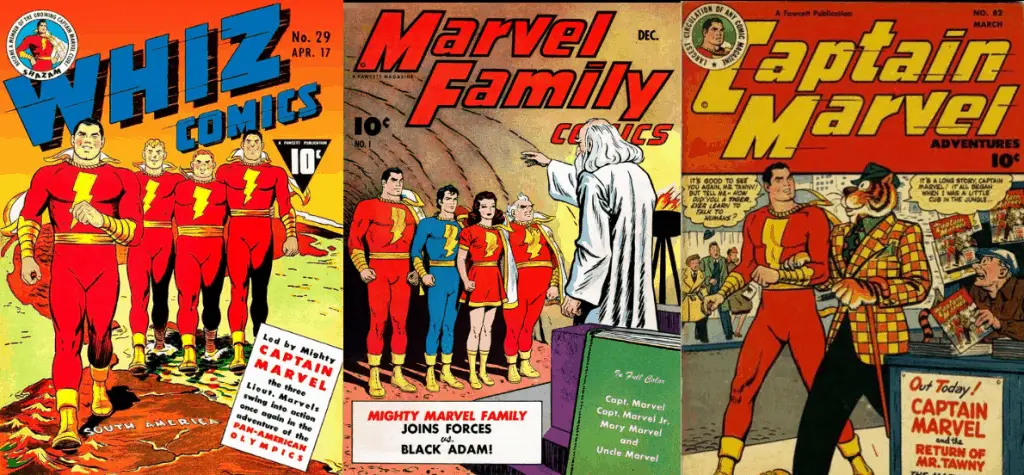
For the good, he gained allies in the fight for justice in Captain Marvel Jr., Mary Marvel, the Lt. Marvels, Uncle Marvel, and even Tawky Tawny, a well-dressed and well-spoken tiger.
But for all the heroes, there are villains as well. Many are known to DC readers by name, and will no doubt eventually be known to moviegoers as well sooner or later. Mister Mind, Captain Nazi, the Monster Society of Evil, Mister Atom, and the two worst of all…Dr. Sivana and Black Adam.
In addition to these fabulous figures, Captain Marvel was one of the first heroes to break into mainstream media. In 1941, Republic Pictures released the 12-chapter movie serial Adventures of Captain Marvel. While the plot was an original one devised by the studio, the core origin of the character and his powers remained intact. Captain Marvel became the first ever superhero to be adapted for film.
As the years passed, Captain Marvel remained popular enough, but there was darkness on the horizon for the character and for Fawcett as well.
It came in the form of a lawsuit going to trial. One that had been filed back in 1941 by DC (then National Comics), claiming that Captain Marvel was an infringement of Superman. In 1948, the case went to trial where things went back and forth. An initial verdict went to Fawcett, but then a re-trial put the ball back in DC’s court in 1952. Coupled with Captain Marvel’s declining sales since the end of WWII, Fawcett decided to settle, ceasing publication of all books that carried Captain Marvel, and paying DC $400,000 in damages. One year later, the company shut down its comic book division and the creative staff was let go.
Time passed, and even though superhero comics endured and returned in the Silver Age of the 1960s, it would be still some time before the world would be graced again with Captain Marvel.
In 1972, then-DC publisher Carmine Infantino decided to bring the property and all its attachments back, so the rights were licensed from Fawcett, with DC eventually purchasing Captain Marvel and all related characters in 1991.

Because Marvel Comics, by the time of the revival, had acquired the trademark on the Captain Marvel name for their own hero, the new book’s heading was labeled Shazam and all subsequent books since have borne that title. Various creative teams worked on the series, including writers Denny O’Neil and Elliot S! Maggin, and artwork by C.C. Beck for the first 10 issues, leaving afterwards and replaced by talent such as Bob Oksner and Don Newton.
Renewed interest at the time lead to a series of TV programs centered around CM. Shazam, produced by CBS, aired from 1974-1976, starring Michael Gray as Billy Batson, Jackson Bostwick as Captain Marvel and Les Treymane as Mentor. The show focused on Billy and Mentor traveling around the country in a motorhome, righting wrongs and teaching valuable lessons to viewers.
Some time after the cancellation of the show, Filmation revisited the character with the Shazam! cartoon that ran from 1981 to 1982.
During the subsequent years, Captain Marvel has appeared in various DC Comics, both his own series and DC books of varying natures. Several attempted revamps after the end of the 1970s series were done, including one by John Bryne, though it never saw print.

It wasn’t until 1994 that something stuck. Jerry Ordway wrote and illustrated a painted graphic novel The Power of Shazam!, that would lead to re-introducing the entire world for a 90’s audience. The following year, a new series with the same title hit the stands and ran until 1999. During those years, Jerry would craft stories that wove not only Captain Marvel and his support figures, but the bulk of the Fawcett line of heroes (Ibis the Invincible, Spy Smasher, etc.) into the fabric of the DC Universe.

After cancellation in 1999, Captain Marvel and the Marvel family have shown up in other DC comic books over the years. Most noted was during Geoff Johns run on the JSA, when Black Adam became a member of the new team and Captain Marvel joined in order to keep an eye on his old enemy, remaining even after Adam’s departure. Then, during the New 52 reboot in 2011, came major change.
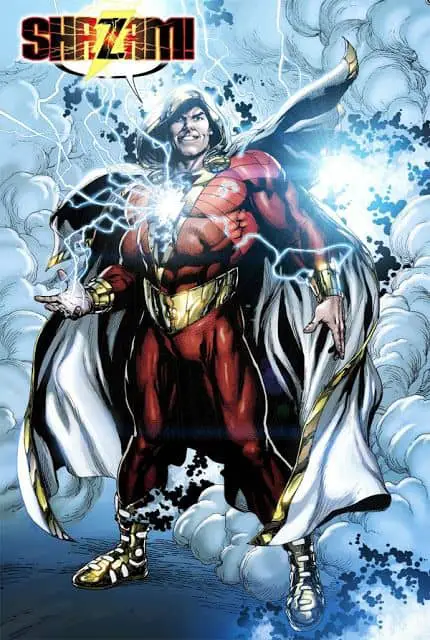
Geoff Johns decided to bring him back with a new, updated origin in the back pages of Justice League (illustrated by Gary Frank). There, Billy Batson was a cynical foster child who is gifted the power by the namesake wizard, fighting Black Adam, and also bringing into the fold other members of his new adopted family. Thus the Shazam family was born. A permanent shift in name also occurred, due to Johns noting that the long association was confusing and many already believed that to be the name of the hero.
Now coming to the present day, with the expansion of the DC Extended Universe of films, is something truly great. April 5th will see the release of the Shazam! major motion picture from Warner Bros. Pictures. With Asher Angel as Billy Batson and Zachary Levi as Shazam, it looks to be an absolute delight. Pulling from the Geoff Johns/Gary Frank revamp story, other noted cast members include Mark Strong as long-time foe Dr. Thaddeus Sivana, Djimon Hounsou as the Wizard, Jack Grazer as Freddy Freeman, Grace Fulton as Mary Bromfield, Ian Chen as Eugene Choi, Jovan Armand as Pedro Peña, and Faithe Herman as Darla Dudley.
So there it is, loyal readers. The history of one hero…his rise, then fall, the rise again, all the way to the big screen. Whether it’s on the printed page, television, or now in movies, Shazam will always have a firm and fixed place in the hearts and minds of people everywhere. Be sure to check out local comic shops for Shazam graphic novels, and have those tickets pre-ordered for the big premiere on April 5th. It’s going to be downright magical.
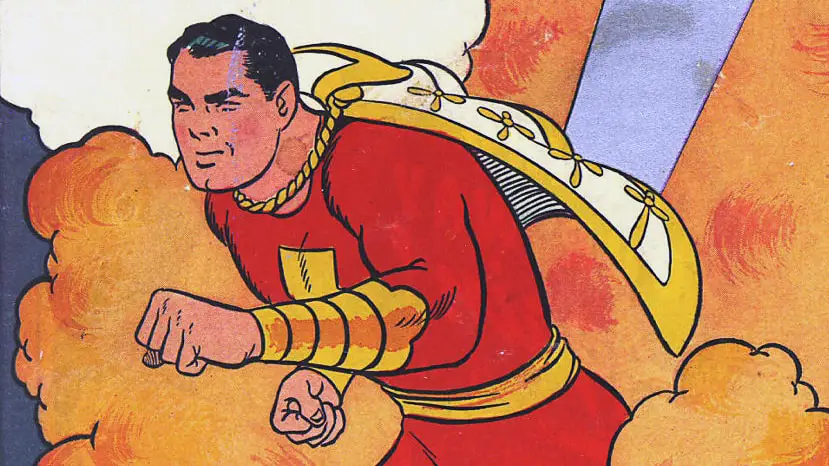
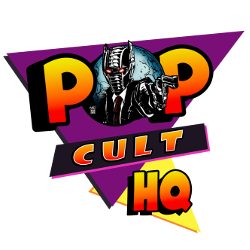

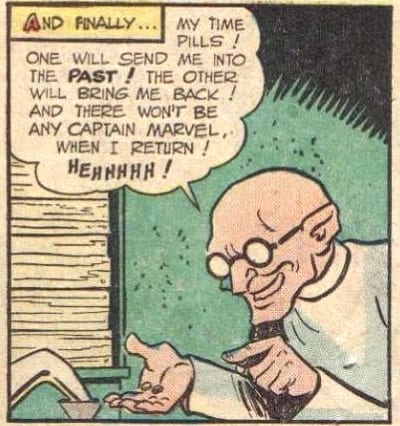
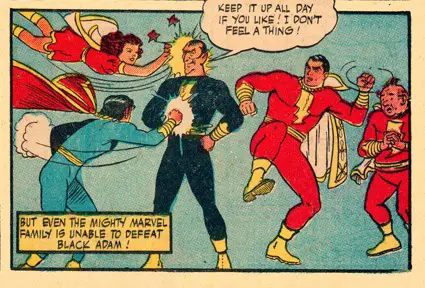

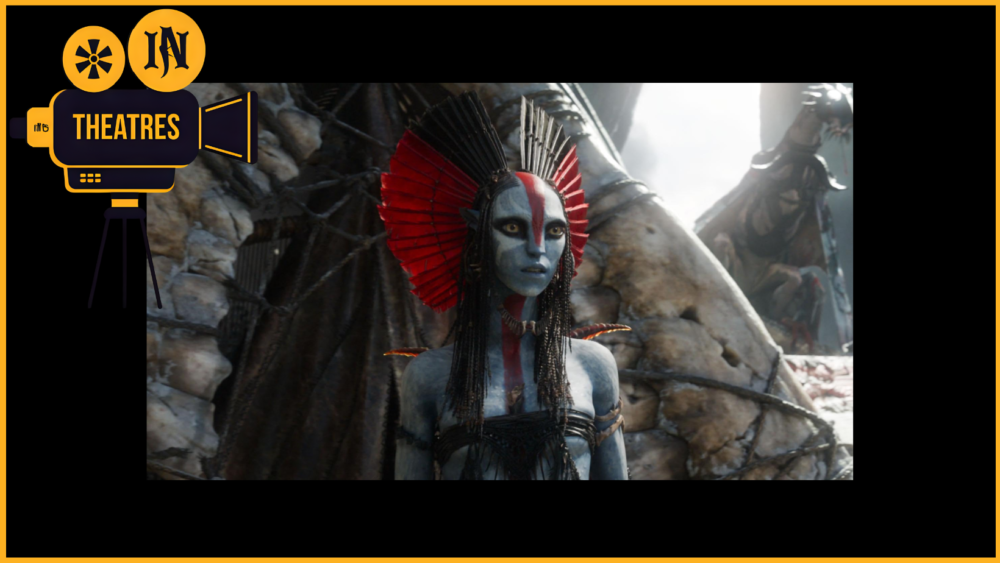
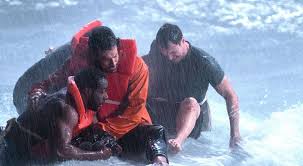
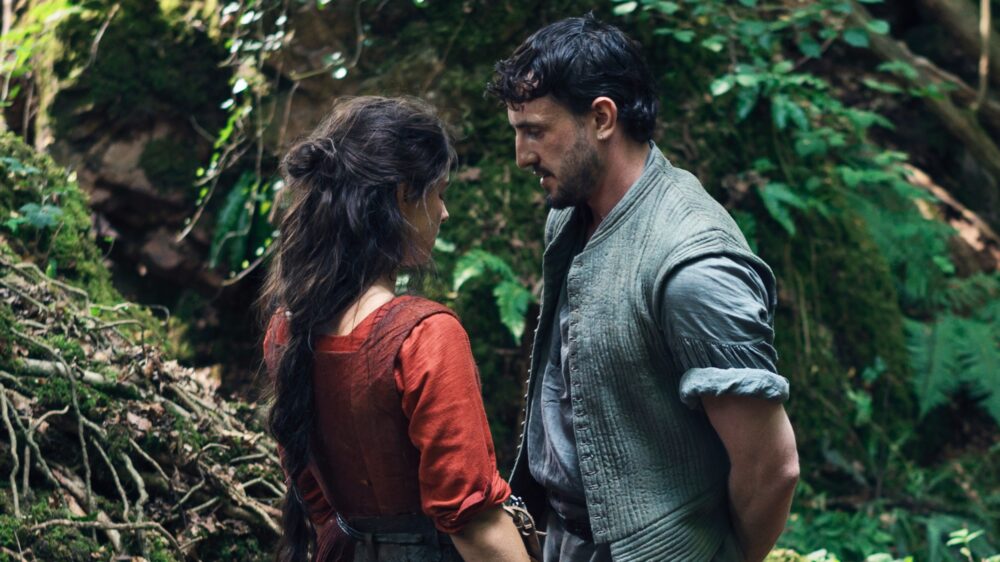
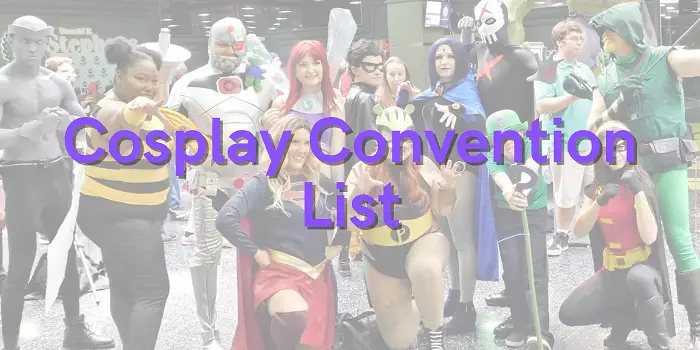
I am so Fondue the Big Red Cheese!